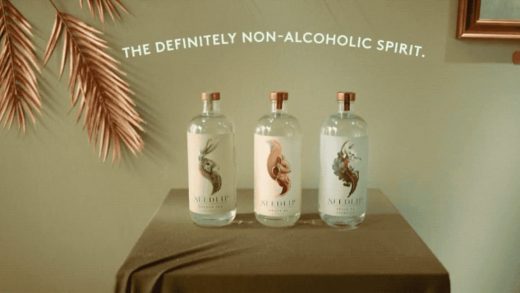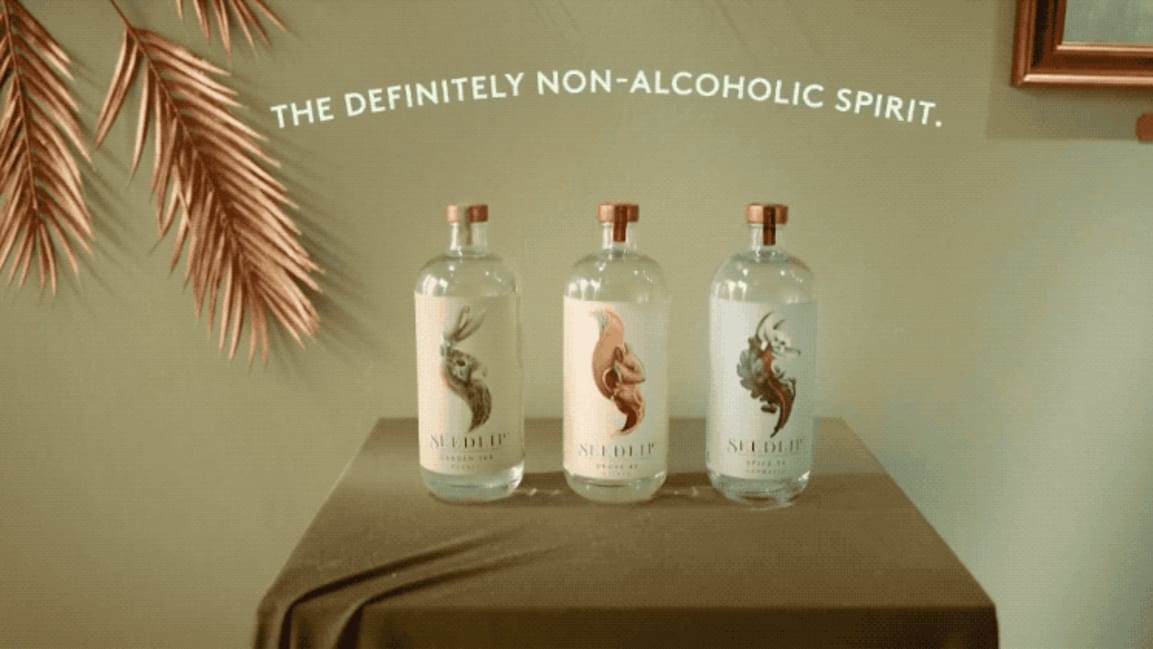How Dry January became a gateway drug for non-alcoholic booze marketing
Happy January 11th, everybody.
Or, as anyone doing Dry January will call it, “three weeks to go.”
Abstaining from alcohol for the first month of the year has become a global phenomenon, an unofficial cultural event. One in five Americans goes dry for the month, and with numbers like that, it’s also become the newest major marketing opportunity for . . . booze companies?
As the “sober curious” trend picks up steam—66% of millennials are making efforts to reduce their alcohol consumption—Dry January is now the gateway drug for brands to convince you to keep drinking their low- and non-alcoholic booze all year round.
We’re only a couple weeks in but already Heineken has won the Dry January sweepstakes with its boozeless advent calendar.
The brand, which launched its 0.0 beer a year ago and backed it with a $50 million marketing budget in 2019, began giving away its January Dry Pack in late December for free from a custom website and quickly ran out. Meanwhile, it’s still working hard to remind us all that its 0.0 brew is the best way to make it through the month.
Up for the #DryJanuary challenge? #Heineken00 #NowYouCan pic.twitter.com/dmn0hcSPgG
— Heineken (@Heineken) January 4, 2020
Booze and beer brands have been co-opting holidays of all stripes for eons. In fact, cultural celebrations like St. Patrick’s Day and Cinco de Mayo have become mainstreamed by beer advertising for so long, they’re less celebrations for Irish and Mexican pride and more for anyone who ever needed juuuuust a bit more of an excuse to binge drink on a weekday. Schlitz was tapping into Halloween back in the ’50s. In November, Michelob Ultra declared itself the “official beer” of Thanksgiving turkey trot runs. What’s next Purim?
Inspired by trotting’s great heroes, we are now The Official Beer of Turkey Trotters. Trotting this Thanksgiving? Share a pic with #WillTrotForBeer and we’ll donate $1 to @AmpleHarvest to help fight hunger. For more info on donations visit https://t.co/ryQJHjjZX7 pic.twitter.com/nvHJcwtNEG
— Michelob ULTRA (@MichelobULTRA) November 21, 2019
MillerCoors used the prospect of Dry January to give those dry-curious another option, getting Succession‘s Nicholas Braun to go full Gregg the Egg with some very “We Hear For You” vibes.
This year, why not try a Dry-ish January with a Lighter Beer-ish Kind of Beer? pic.twitter.com/szrYuyRPwR
— Miller64 (@Miller64) December 26, 2019
In August 2019, Diageo acquired non-alcoholic spirits company Seedlip and quite purposely chose Dry January as the jump-off point to launch its first-ever brand campaign, which kicked off this week. “Dry January is a big thing for Seedlip,” says Diageo North America CMO Ed Pilkington, whose company has also invested in Ritual non-alcoholic spirits and has been ramping up marketing in recent years behind overall moderation with brands like Ketel One and Crown Royal. He says the brand is using the month to elbow in on the growing popularity of mocktail menus. “Our first big U.S. campaign is saying, ‘Hey it’s Dry January and you can drink Seedlip any time and anywhere’,” says Pilkington.
AB InBev has declared its goal to make 20% of its beer sales from low to non-alcoholic beer by 2025. It owns grocery store staple O’Douls, but has in recent years also launched Budweiser Prohibition brew in Canada and Budweiser 0.0 in other markets. “We view [Dry January] as an opportunity,” says Adam Warrington, AB InBev’s VP of corporate social responsibility. “What you can do with your marketing is drive up the awareness of the category, drive consideration, and this is a perfect time to be part of those conversations.”
Of course, being the biggest brewer in the world, the company can afford to double dip and also use this month to woo the demographic that thinks Dry January is bonkers.
Girlfriend: Let’s do Dry January this year
Us: pic.twitter.com/J0qzwAOhIc
— Busch Beer (@BuschBeer) January 6, 2020
Non-alcoholic beer startup Athletic Brewing has been going gangbusters since it opened its taps in 2018, and so far this month e-commerce sales (which typically make up between 30% and 50% of its overall business) are up 40% from December. The company also ramps up its in-store promotions and displays to remind dry folks that they do have other options. For founder Bill Shufelt, Dry January isn’t just about a one month sales spike. “It’s much easier to introduce ourselves to customers in January,” he says, “and we find a lot of those customers stick with us throughout the rest of the year.”
When it comes to Dry January, you can take a break from the booze, but there is no month—yet!—for brands to swear off marketing.
Fast Company , Read Full Story
(34)



